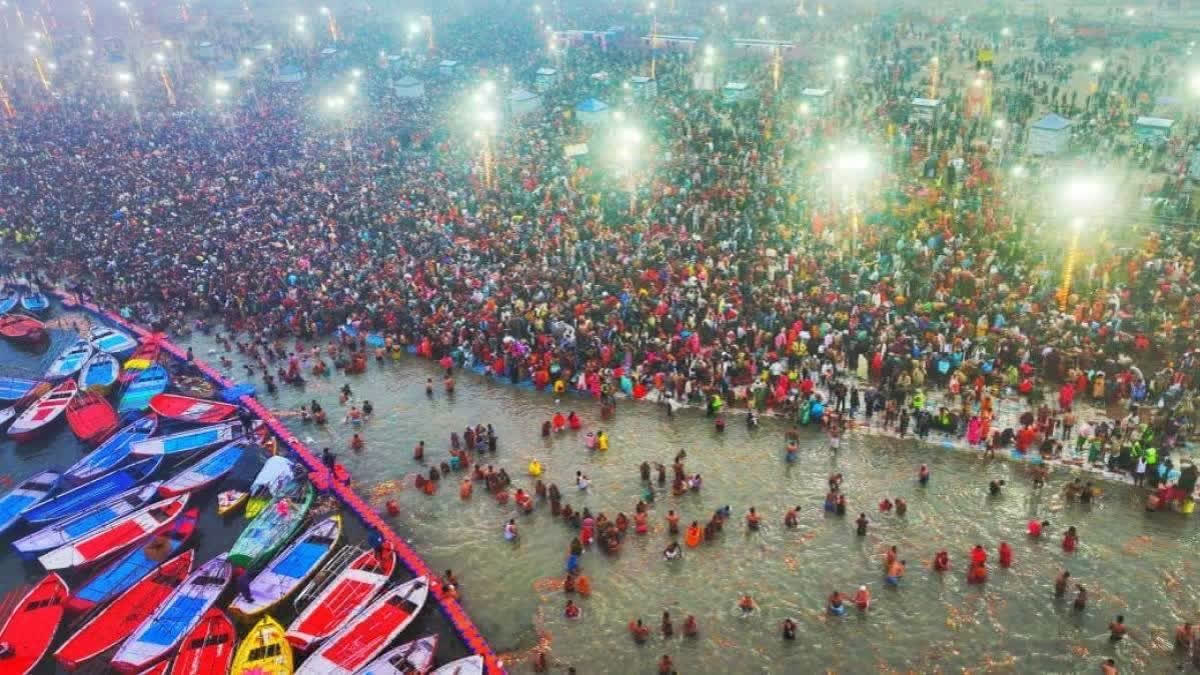Mahakumbh Nagar:Pilgrims thronging river banks through the clock, vendors selling 'puja' ware and security staff everywhere to manage the crowds converging at confluence point -- the Triveni Sangam is where the lines between day and night blur. From morning till dusk and midnight till dawn, the cycle of spiritual bathing at the mega gathering of humanity in this holy city goes on without a break.
The religious festival, billed to be the largest gathering of people in the world, ends on Wednesday with the final 'snan' on Mahashivratri. And to make the most of the time left, a sea of people can be seen going into and out of the Maha Kumbh Mela area at any given time, many choosing the night to avoid the massive rush during the day.
Around 1.30 am Tuesday, when much of the country was sleeping, the ghats facing the Sangam nose, where the Yamuna, Ganga and the mythical Saraswati meet, and near the spot were buzzing with life with a surge of humanity rushing in with just one purpose -- 'Kumbh snan'.
The crowd swelled hour after hour. Pilgrims jostled with each other to reach the river bank, and those having taken the holy dip struggled to find a spot to change their clothes. The banks were literally choked with devotees, young and old, rural and urban, men and women.
"'Jai Ganga Maiyya, I had my 'snan' and it feels reinvigorating. This is my first time at any Kumbh Mela, I am glad I could be part of it," said a pilgrim from Jharkhand's Sahibganj, who took a dip along with his wife and son at around 2 am. As the crowds continued to grow, many just sitting down at and near the Triveni Sangam, police personnel in uniform walked near the banks instructing people to not put any bags on ground near the edges of the ghats, and not jostle for space.
"'Aage badhiye, aage badhiye' (move forward, move forward)," shouted a policeman on duty to people and told then not to push and shove, repeatedly blowing his whistle to manage the crowd. The rush kept increasing. Many got separated from their loved ones and friends either at the banks or at other parts of the Mela area.
